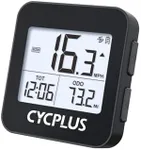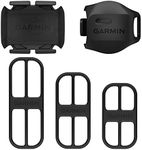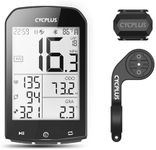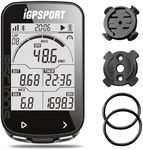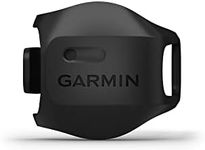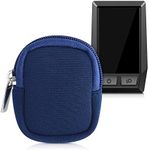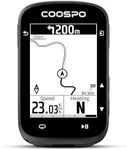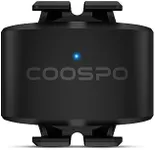Buying Guide for the Best Bike Speedometers
Choosing the right bike speedometer can greatly enhance your cycling experience by providing you with valuable data about your rides. Whether you're a casual rider or a serious cyclist, understanding the key features and specifications of bike speedometers will help you make an informed decision. Here are the main aspects to consider when selecting a bike speedometer.Display TypeThe display type of a bike speedometer is important because it affects how easily you can read the information while riding. There are mainly two types: analog and digital. Analog displays use a needle to show speed, which can be harder to read at a glance. Digital displays show numbers and are generally easier to read quickly. If you often ride in low-light conditions, look for a speedometer with a backlit display. Choose a display type that you find easy to read and suits your riding conditions.
Functions and FeaturesBike speedometers come with a variety of functions and features, ranging from basic to advanced. Basic models typically show speed, distance, and time. More advanced models can include features like heart rate monitoring, GPS navigation, cadence (pedal speed), and connectivity to smartphones or other devices. Consider what data is most important to you. If you're a casual rider, basic functions may suffice. If you're training or cycling long distances, advanced features could be very beneficial.
ConnectivityConnectivity refers to the speedometer's ability to connect with other devices, such as smartphones, fitness trackers, or cycling apps. This can be useful for tracking your rides, analyzing performance, and sharing data. Some speedometers use Bluetooth or ANT+ technology for connectivity. If you like to keep detailed records of your rides or use apps for training, look for a speedometer with good connectivity options.
Battery LifeBattery life is crucial because it determines how long you can use the speedometer before needing to recharge or replace the batteries. Some speedometers use replaceable batteries, while others have rechargeable batteries. Basic models with fewer features generally have longer battery life. If you go on long rides or don't want to worry about frequent recharging, look for a model with a longer battery life. Consider your riding habits and how often you're willing to deal with battery maintenance.
Mounting and InstallationMounting and installation refer to how the speedometer is attached to your bike and how easy it is to set up. Some speedometers are wireless, which makes installation easier and cleaner, while others are wired and may require more effort to install. Consider how comfortable you are with installing the device yourself. If you prefer a hassle-free setup, a wireless model might be the best choice. Also, check if the speedometer comes with all necessary mounting hardware and clear instructions.
Durability and Weather ResistanceDurability and weather resistance are important if you ride in various weather conditions or on rough terrain. Look for a speedometer that is water-resistant or waterproof to ensure it can withstand rain and splashes. Durability is also key if you often ride on bumpy roads or trails. Check the build quality and materials used in the speedometer. If you ride in harsh conditions, prioritize a robust and weather-resistant model.
